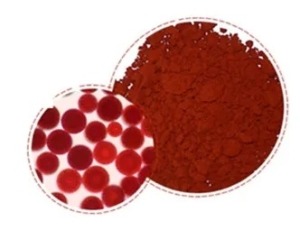Alzheimer’s disease (AD) is one of the most severe chronic neurodegenerative disorders, characterized by memory impairment and cognitive dysfunction due to neuronal loss, mainly in the neocortex and hippocampus. The incidence of AD has increased dramatically in the last decades.
 Nowadays, there are many unknown aspects regarding the physiopathology of AD. Various theories have tried to explain the molecular mechanisms responsible for the initiation and progression of AD. Not one of these hypotheses alone can fully explain this complex neurodegenerative disease.
Nowadays, there are many unknown aspects regarding the physiopathology of AD. Various theories have tried to explain the molecular mechanisms responsible for the initiation and progression of AD. Not one of these hypotheses alone can fully explain this complex neurodegenerative disease.
Abnormal formation and aggregation in the brain of amyloid-beta plaques are considered the initial causes of AD. Many studies have already demonstrated that the formation of these plaques is caused by an imbalance between synthesis and clearance of amyloid-beta. Accumulation of amyloid-beta induces oxidative stress and inflammation at the neurofibrillary tangle level, inducing neuronal death stimuli in the brain of patients with AD.
Moreover, some studies have described the presence of high numbers of damaged mitochondria in the neurons of AD patients, probably due to mutations in mitochondrial DNA. Oxidative stress at the expense of mitochondria occurs during the early stages of AD, suggesting a predominant role of oxidative stress in the progression of this disease.
For this reason, natural compounds with antioxidant and anti-inflammatory properties are recommended for preventing or reducing the progression of this specific neurodegeneration.
In particular, astaxanthin is able to act against oxidative injuries, through various mechanisms, by quenching singlet oxygen, scavenging radicals, inhibiting lipid peroxidation, and regulating gene expression related to oxidative stress.
Astaxanthin exhibited a strong anti-inflammatory effect, suppressing the expression of inflammatory mediators, such as TNF-a, PGE2, and IL-1p and blocking the production of nitric oxide (NO) and the NF-KB-dependent signaling pathway.
Other studies using different experimental models mentioned similar anti-inflammatory effects of astaxanthin. In particular, astaxanthin (50 ^M) drastically reduced the release of inflammatory mediators in activated microglial cells (BV-2 cell line) through the modulation of factors involved in the NF-kB cascade (e.g., p-IKKa, p-IKBa, and p-NF-KB p65, IL-6 and MAPK).
 These findings validate the astaxanthin administration as adjuvant therapy for AD; it’s because this carotenoid can attenuate microglial activation and the consequent release of pro-inflammatory cytokines. This effect has positive repercussions on neuronal integrity, especially in older people, which tend to show increased inflammation in the brain.
These findings validate the astaxanthin administration as adjuvant therapy for AD; it’s because this carotenoid can attenuate microglial activation and the consequent release of pro-inflammatory cytokines. This effect has positive repercussions on neuronal integrity, especially in older people, which tend to show increased inflammation in the brain.
Endogenous antioxidant enzymes lower their activity and efficiency with age. Recent studies support the beneficial effect of astaxanthin on the activation of antioxidant mechanisms, increasing the levels or stimulating the activity of endogenous enzymes, such as superoxide dismutase (SOD) and catalase.
A recent study investigated in mice the effect of astaxanthin on antioxidant enzymes expressed in major brain structures. Catalase and SOD were found to be highly expressed, together with a reduction in glutathione level, when mice were supplemented with 2 mg/Kg of astaxanthin for one month. Al-Amin and collaborators also showed a reduction of malondialdehyde (MDA) and advanced protein oxidation product (APOP) levels in some brain areas, such as the frontal cortex, hippocampus, cerebellum, and striatum, which showed a decrease in lipid peroxidation levels.
PC12 are neuronal cells from rats used as an artificial nervous system tissue model to study neurodegeneration and, in particular, AD. These cells were protected from neurotoxicity induced by 30 |^M of beta-amyloid peptide when treated with astaxanthin. This protective effect was due to caspase 3, Bax, IL-1。and TNFa, NF-kB inactivation, and suppression of ROS production.
Other studies have demonstrated the protective effect of astaxanthin on the amyloid beta-induced generation of ROS and calcium dysregulation in primary hippocampal neurons and the significant decrease of oxidative stress levels and cell death in PC12 cells injured with n-methyl-4-phenylpyridinium iodide (MPP+).
Recent studies have reported on the direct relationship between the healthy effects of astaxanthin on the human brain and the promotion of neurogenesis and plasticity, two processes that significantly decrease with age and lead to cognitive decline among older people.
Although the molecular process has not been completely elucidated, astaxanthin promotes neurogenesis and improves behavioral performance in hippocampal-dependent tasks; this could represent the predominant mechanism induced by astaxanthin, acting on cognitive functions and neurodegeneration caused by AD.
Neural stem cells exhibit higher proliferation rates and colony-forming capacity in a time- and dose-dependent manner when treated with astaxanthin. This result was corroborated by the upregulation of cyclin-dependent kinase 2 (CDK2), genes involved in proliferation control. With these pro-proliferative effects, astaxanthin showed protective properties in neural progenitor cells (NPC), significantly reducing apoptotic machinery in NPCs exposed to pro-oxidant agents.

Leave A Comment